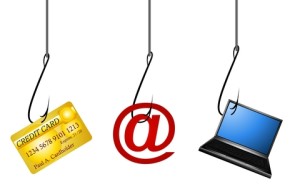 I’ve written a lot in the past about identity theft and the importance of protecting your online accounts. These six points were contained in an email from my mortgage broker and I think they definitely are worth repeating.
I’ve written a lot in the past about identity theft and the importance of protecting your online accounts. These six points were contained in an email from my mortgage broker and I think they definitely are worth repeating.
1. Update software. The latest computer, smartphone and apps software is the most secure. Update now and choose ‘Update Automatically’ in Settings. Update your WiFi router on its app or Web setup page.
2. Strengthen passwords. Make them long strings of random upper and lower case letters, numbers and symbols. Use a different one for every site. Turn on two-factor authentication for Apple ID, Google, Facebook (‘login approvals’), Microsoft, Twitter (‘login verification’) and banks. Use a password manager to sync devices.
3. Encrypt data. Makes it hard for someone to access information if they get your device. Encrypt with a password or fingerprint screen lock, or turn on ‘encryption’ in Settings. Use Disk Utility on external drives.
4. Privatize browsers. Select ‘clear browsing data.’ (This deletes passwords which shouldn’t be saved on sites anyway.) Activate ‘Do Not Track’ in Settings. Block trackers with an extension (Ghostery, Disconnect, EFF’s Privacy Badger). Opt out of ad tracking at http://www.aboutads.info/choices/
5. Check apps. Find out which ones access locations and data and turn off if not used. Check Settings for Privacy permissions. Check Google and Facebook security. Delete Facebook apps you don’t want.
6. Think! Don’t click on email links or attachments you don’t expect. Make online payments only on secure “https” sites. Double-check public hotspot names, or use a VPN—HotSpot Shield (Windows, Android), Cloak (iPhone, Mac). Use PayPal on unfamiliar sites. Don’t pay online with debit cards or put account info in emails.
For more information about protecting your digital assets, go to www.diesmart.com.
